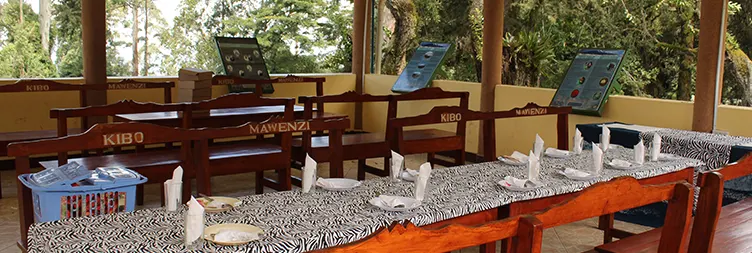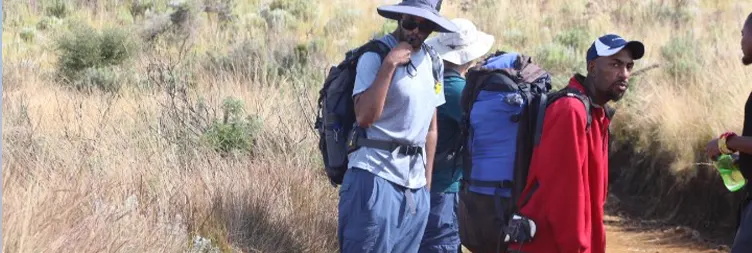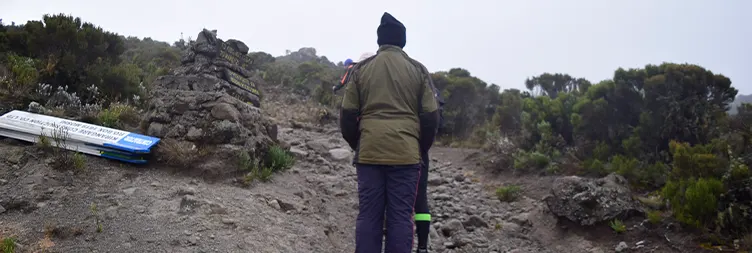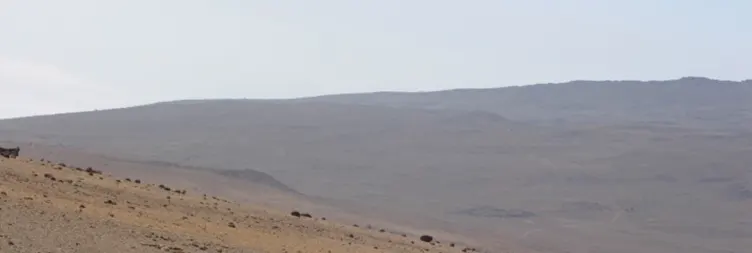Day 1: Marangu Gate to Mandara Hut

Your Kilimanjaro trek begins at the Marangu Gate, where you'll complete necessary registrations and meet your experienced guides and porters. The journey kicks off through the lush rainforest, immersing you in the captivating sights and sounds of nature. Trekking approximately 8 kilometers (5 miles) will bring you to the Mandara Hut, where you'll spend your first night on the mountain.
Destination: Marangu Gate To Mandara Hut
Accommodation: Mandara Hut
hut
Meals & Drinks: Lunch, Dinner, Drinking water
Day 2: Mandara Hut to Horombo Hut

Leaving Mandara Hut behind, you'll continue your ascent towards Horombo Hut. This part of the trek takes you through diverse ecological zones, including the fascinating heath and moorland. As you navigate the changing landscapes, keep an eye out for unique plant species and wildlife. Covering a distance of around 12 kilometers (7.5 miles), you'll arrive at the Horombo Hut, where you'll rest for the night.
Destination: Mandara Hut To Horombo Hut
Accommodation: Horombo Hut
hut
Meals & Drinks: Breakfast, Lunch, Dinner, Drinking water
Day 3: Acclimatization Day at Horombo Hut

Acclimatization is vital for a successful summit. Day 3 is dedicated to adjusting to the altitude at Horombo Hut. You'll have the opportunity to explore the surroundings, take short hikes to higher elevations, and absorb the awe-inspiring vistas. This extra day of acclimatization enhances your chances of reaching the summit safely.
Destination: Horombo Hut To Mawenzi Ridge To Horombo Hut
Accommodation: Horombo Hut
hut
Meals & Drinks: Breakfast, Lunch, Dinner, Drinking water
Day 4: Horombo Hut to Kibo Hut

On day 4, you'll continue your journey from Horombo Hut to Kibo Hut. The trek will take you through the alpine desert, where the landscape becomes barren and the air thinner. As you steadily ascend, you'll notice the temperature dropping and the vegetation giving way to rocky terrain. This leg of the trek covers approximately 10 kilometers (6.2 miles) and concludes at Kibo Hut, where you'll rest and prepare for the summit push.
Destination: Horombo Hut To Kibo Hut
Accommodation: Kibo Hut
hut
Meals & Drinks: Breakfast, Lunch, Dinner, Drinking water
Day 5: Summit Day - Kibo Hut to Uhuru Peak and Descent to Horombo Hut

Day 5 is the highlight of your Kilimanjaro trek as you make the push to the summit – Uhuru Peak. The final ascent starts at night to witness the sunrise from the rooftop of Africa. This challenging and awe-inspiring journey requires mental and physical stamina. As you reach Uhuru Peak, at the majestic height of 5,895 meters (19,341 feet), a sense of accomplishment and overwhelming beauty will fill your heart. After celebrating your achievement, you'll begin the descent back to Kibo Hut and further down to Horombo Hut, where you'll spend the night.
Destination: Kibo Hut To Uhuru Peak To Horombo Hut
Accommodation: Horombo Hut
hut
Meals & Drinks: Breakfast, Lunch, Dinner, Drinking water
Day 6: Horombo Hut to Marangu Gate and Farewell
The final day of your trek involves descending from Horombo Hut back to the Marangu Gate. As you make your way down, take in the sweeping views and reflect on your incredible journey. At the Marangu Gate, you'll bid farewell to the mountain and the dedicated team who supported you throughout your adventure. Celebrate your accomplishment and cherish the memories of your Kilimanjaro trek.
Destination: Horombo Hut To Mandara Hut To Marangu Gate
Meals & Drinks: Breakfast, Lunch, Drinking water
TOUR PRICE/COST
We offer two pricing options:
The cost is shared within your private group. More people means a lower price per person.
Join others on a fixed-date tour at a set per-person rate—ideal for solo travelers or small groups.
Private (Shared) Price
| No of pax | Adult | Child |
|---|---|---|
| 1 pax | $1,423 pp | $1,067 pp |
| 2–4 pax | $1,398 pp | $1,049 pp |
| 5–9 pax | $1,373 pp | $1,030 pp |
Group joining price
| Adult | Child |
|---|---|
| $1,398 pp | $1,049 pp |
PRICE INCLUSIONS & PRICE EXCLUSIONS
InclusionsThe Booking Form

6 Days Kilimanjaro Trekking Adventure via Marangu Route
6-day Kilimanjaro Trekking: Discover the beauty and challenge of Kilimanjaro over 6 days Reach the summit with experienced guides
N.B: After you send your booking we will get back to you with in 24 hours.
.webp)
.webp)
.webp)
.webp)
.webp)
.webp)
.webp)
.webp)
.webp)
.webp)
.webp)
.webp)
.webp)
















